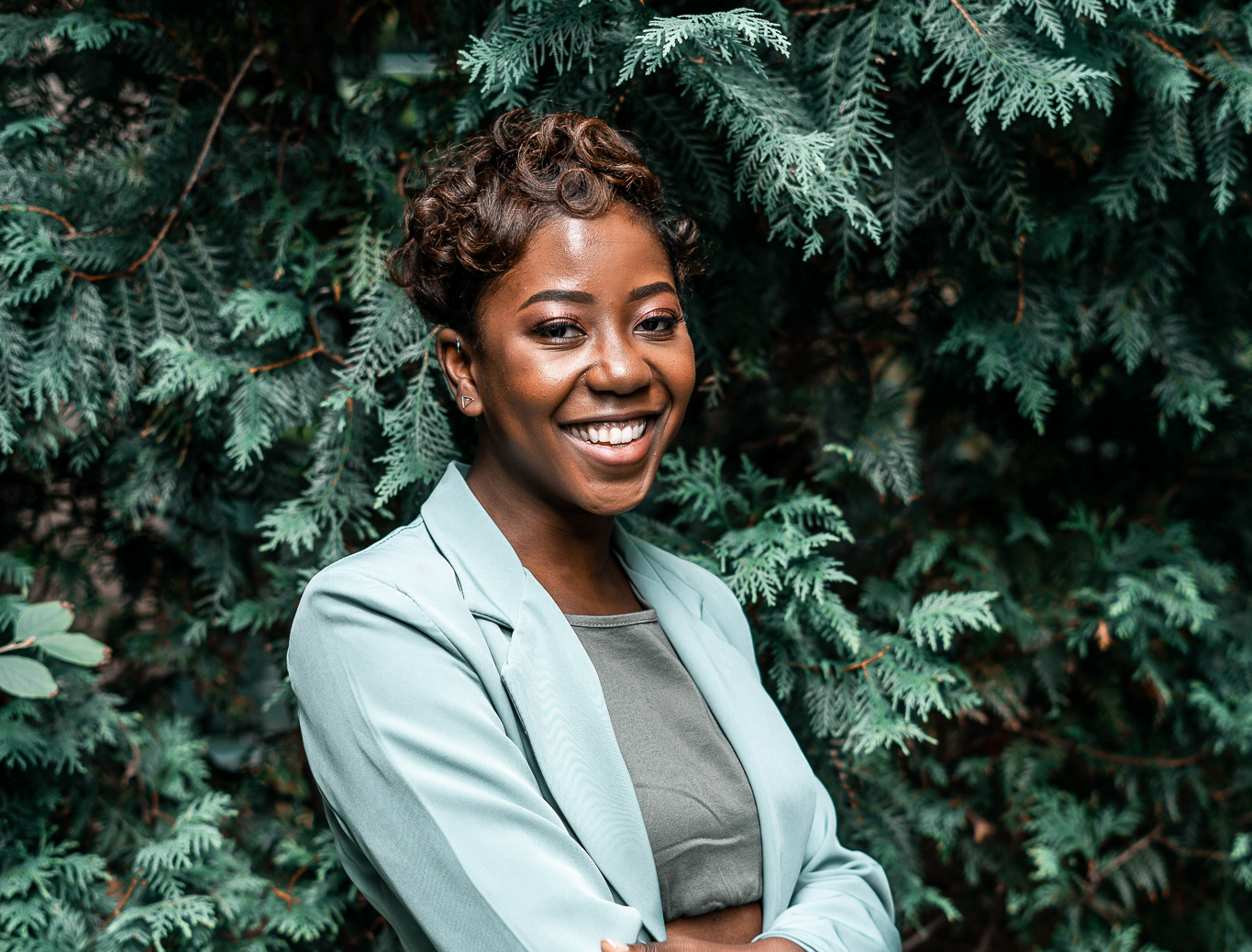 Shelly Chipimo, Northeastern Alumna.
Shelly Chipimo, Northeastern Alumna.
Northeastern University School of Architecture alumna Shelly Chipimo is a Designer at Utile, Inc., a Boston-based architecture and design firm known for solving complex urban problems in intelligent ways. Shelly, who is a Double Husky and graduated with both a Bachelor of Science in Architecture and Master of Architecture, joined the firm while completing her graduate degree. In this way, she was able to apply her academic research and classroom work to her role at Utile – and apply her real-world experience directly back to her thesis project. We had the opportunity to catch up with Shelly; read more below!
Tell us about your current role as a Designer at Utile – what are your responsibilities?
When I joined Utile, I was in a joint research studio at Northeastern focused on security and its impacts on spatial and social hierarchies in design (the final studio publication can be found here). My area of focus was on security in schools, a topic of growing national concern amid the recent increase in mass shootings. Unsurprisingly, one of the first projects I worked on when I joined Utile was for an early childhood education center in the historic South End neighborhood of Boston. Coincidentally, this uniquely multi-racial neighborhood was also the neighborhood I chose to situate my studio project in.
The parallel between working on my own conceptual design for the school of the 21st century, and experiencing the design of a school in a real-world setting, was instrumental in helping me create a more convincing argument for my thesis (link to the project is here for those who are interested). I wanted to show that the traditional classroom model actually makes students more vulnerable because it creates a captive audience behind closed walls. It seems that when schools put stronger security measures in place with the intended outcome of keeping students safe, it can actually have unintentional adverse effects. A totally open classroom environment – even spilling out to outdoor workspace – is less of a target because when groups of people come together, they automatically become, in effect, each other’s supervision.
I learned that successful school design should center on the needs of those whom the school is intended to serve, and this is the children.
It should support a variety of learning styles, while maintaining the inherent playfulness and openness of a campus that is essential to stimulating healthy childhood development. I definitely think that collectively, as an industry, architects can do more to improve the design of schools in this country.
While architecture is not the whole piece of the puzzle, it’s definitely an important one – and the nuances around it continually inform the larger design decisions that I make while working on projects at Utile.
What has been a career highlight for you so far? Any projects or accomplishments that stand out?
I’d say that in the nine months that I’ve been at Utile, I have had the pleasure of working on a tremendous variety of projects in various stages that I don’t think I’d have amassed as quickly in other offices. I recently got to interview for a project that we were just awarded (a role that in some offices is reserved for only senior staff only); I get to work one-on-one with all our clients and consultants as a point of contact.
All in all, I just feel like I am in the right place to take charge of my career and the type of work I am interested in doing.
Currently, my list of projects ranges from an early childhood education center, to a library, to an interior design renovation for an apartment complex. Interior design is something I’ve always enjoyed doing. In fact, I think it goes hand-in-hand with architecture, but not every office does that type of work. You learn a lot about the way people think when you work with them on conceptualizing an interior design project because aesthetic is often a very personal topic. Sometimes it’s challenging to find a middle ground, but once you get in sync with a joint vision, it’s exciting to execute the work together.
You are a Double Husky – tell us about your experience at Northeastern!
I knew when I applied to Northeastern as a freshman that I would be there for the full six years: the five-year undergrad and the one-year MArch. What I liked the most is that the program is organized to allow students to efficiently get multiple degrees in significantly less time than if they pursue a graduate degree elsewhere. Additionally, having the opportunity to do several co-ops only made me more eager to get my degree and get into the workforce sooner rather than later.
Ultimately, co-op confirmed for me that I was in the right program and getting the right type of experience.
It significantly improved the quality of my school work because I had access to unlimited office resources and programs that professional architects used, and I also had the opportunity to build and design high quality architectural models for clients which significantly improved my portfolio. Once you get those skills under your belt, it’s only natural that you learn to leverage them in your favor to get your name out there.
Why are passionate about the fields of architecture + design – what do you love about this industry and your work?
As an African woman in this field (of which there are very few), I am most passionate about adding another face of color to the industry and leaving a positive mark for others who aspire to join this field. I have worked with only one black architect since joining the profession; there were none on any of my co-ops. I have also always been the only person of color working at any given office until I joined Utile. So I see my presence in the industry as an opportunity to bring other people of color on board – all of whom are clearly just as able and qualified as I am, but merely discouraged because they don’t see anyone else that looks like them.
I attribute where I am today to my very supportive upbringing and learning environment, and I realize that not everyone is as fortunate to have such a good support system. And because I made it, I believe that I have to pass it forward to others who also deserve a seat at the table, whether this is through mentorship or other means.
Additionally, it is nice to see that there are a lot more companies out there trying to be more inclusive in their employment of people of color, and I happened to have found one that is diverse both in terms of both race and gender, and one that is willing to give me the same leadership opportunities as my peers. My biggest piece of advice to others in my position is to know yourself and your worth, and know that you have something to contribute. At the end of the day, it starts with you, and others may be looking up to you – so you also need to be your own champion sometimes.
In addition to your work at Utile, you are a Contributor to Afriquette, an online journal dedicated to celebrating creatives from Africa as well as members of its diaspora – tell us more about this!
I have been with the platform for a little over two years, curating content on Instagram (the epicenter of the internet these days) and have watched it grow tremendously. There are so many people out there who have interesting stories to tell and creative ideas to show but don’t necessarily have the audience for it, or the means to realize their visions. What’s nice about Afriquette is that has become a networking tool for people of the diaspora to get in touch with other like-minded people who can help them pursue their creative endeavors.
We’ve grown to the point where we are starting to pursue branding opportunities with larger companies. We want to help tell their stories in their way, because storytelling is a livelihood for some, and I believe it has tremendous value. It’s really humbling and rewarding to be able to do a small bit of good for people who often feel like they go unseen in the public eye.


